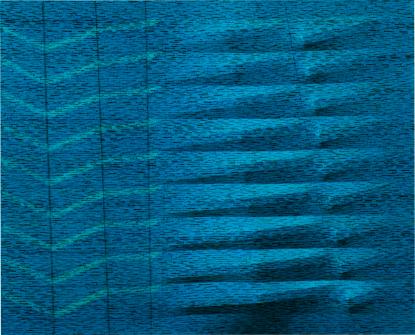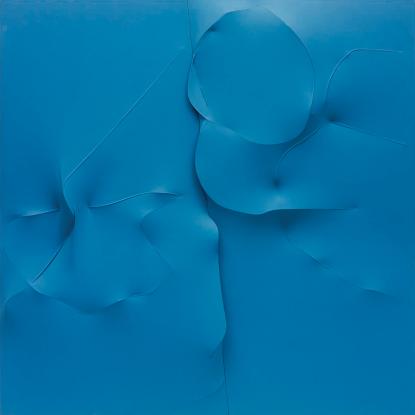Agostino Bonalumi
An Italian abstract artist who was a part of the Post-War avant-garde movement and associated with the ZERO movement, Agostino Bonalumi was born in 1935 in Vimercate, Italy. A self-taught artist, he studied technical design and mechanics. He spent most of his life in Italy, apart from a period of study and work in Mediterranean Africa and in the United States. He died in Monza, Italy in 2013.
Bonalumi is best known for his shaped vinyl-coated monochromatic canvases. He created the term “extroflexions” invoking an intricate stretcher, which he would use to mold his canvases to create the illusion of an invisible force pushing out from underneath. Bonalumi referred to his works as Picture-Objects. In the 1960s, Bonalumi expanded his materials to include metals, and he enlarged the scale of his work, ultimately creating installations.
Bonalumi’s work has been shown in numerous major solo and group exhibitions, including the Venice and São Paulo biennials, and is part of the collections of several museums, including Galleria Civica d’Arte Moderna e Contemporanea in Turin, Galleria Nazionale d’Arte Moderna e Contemporanea in Rome, the Museu Coleçao Berardo in Lisbon, the Peggy Guggenheim Collection in Venice, and the Walker Art Center in Minneapolis. Retrospectives of the artist’s work have been held at the Institut Mathildenhöhe in Darmstadt, Germany, in 2003, the Moscow Museum of Modern Art in 2011 and at the Palazzo Reale in Milan in 2018. In 2002, he was awarded the Presidente della Republica Prize.

SELECTED WORKS

Agostino Bonalumi, Giallo, 1978
Acrylic on canvas
70 x 70 cm | 27.6 x 27.6 in

Agostino Bonalumi, Blu, 1988
Vinyl tempera on shaped canvas
81 x 100 cm | 31.9 x 39.4 in

Agostino Bonalumi, Azzurro, 1997
Vinyl tempera on shaped canvas
200 x 200 x 11,5 cm | 78.7 x 78.7 x 4.5 in

Agostino Bonalumi, Blu, 1966
Vinyl tempera on shaped canvas
70 x 60 cm | 27.6 x 23.6 in